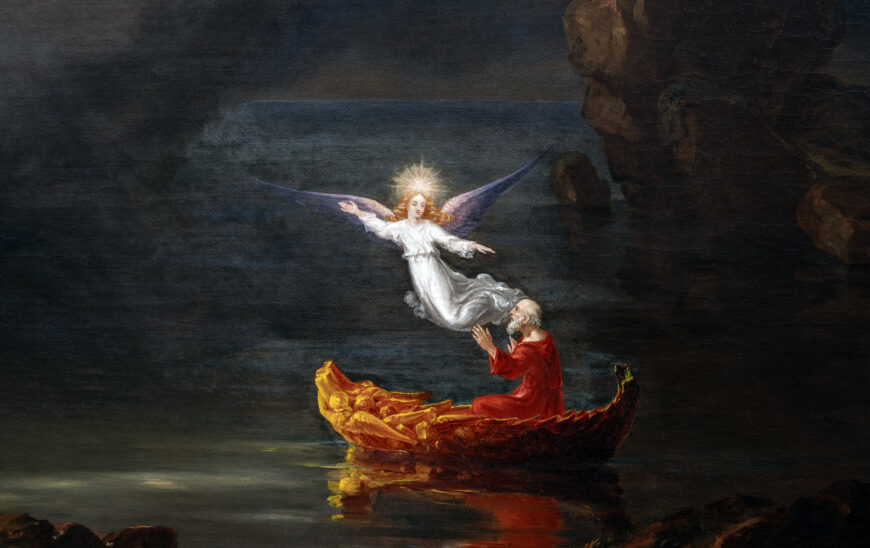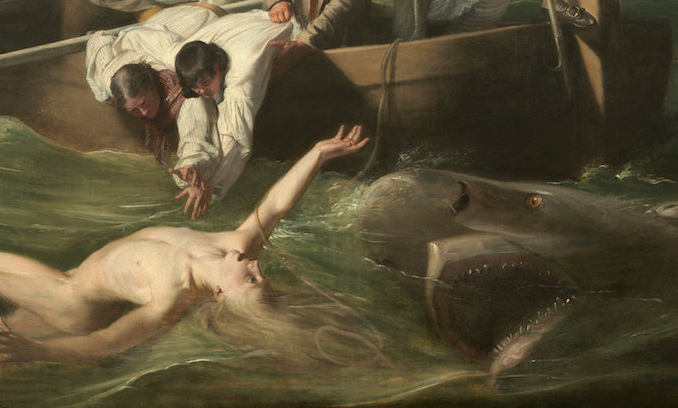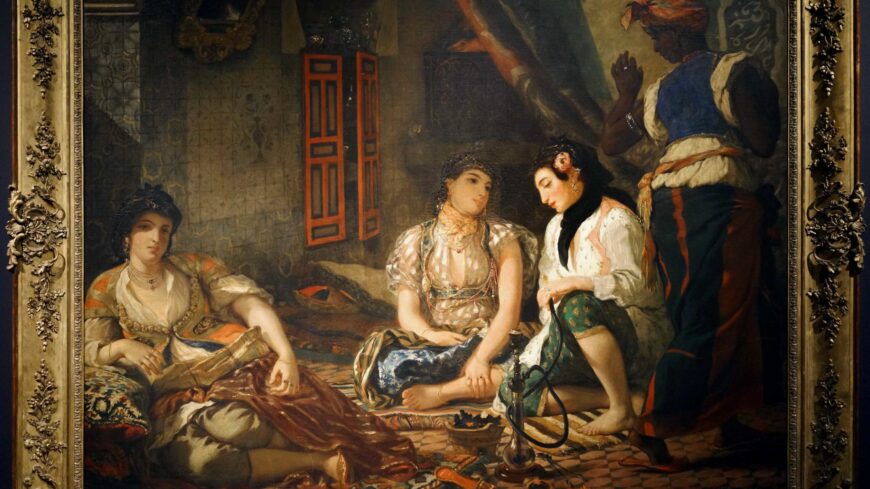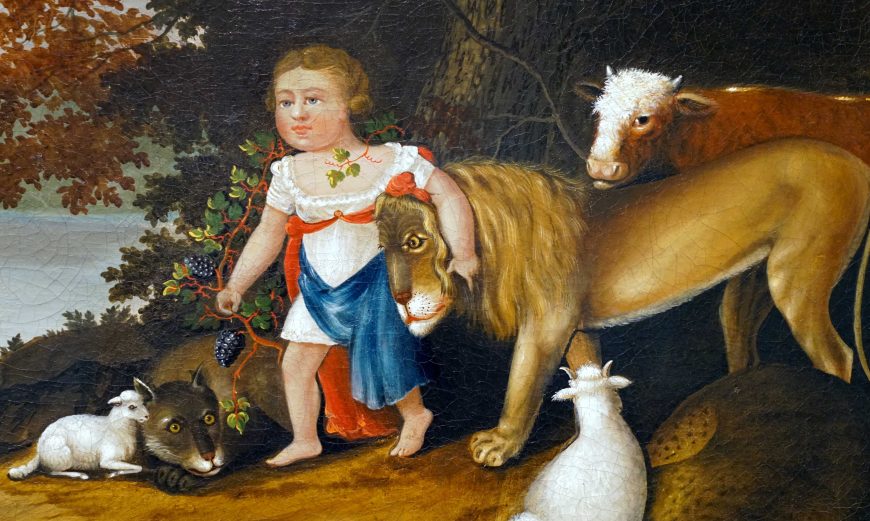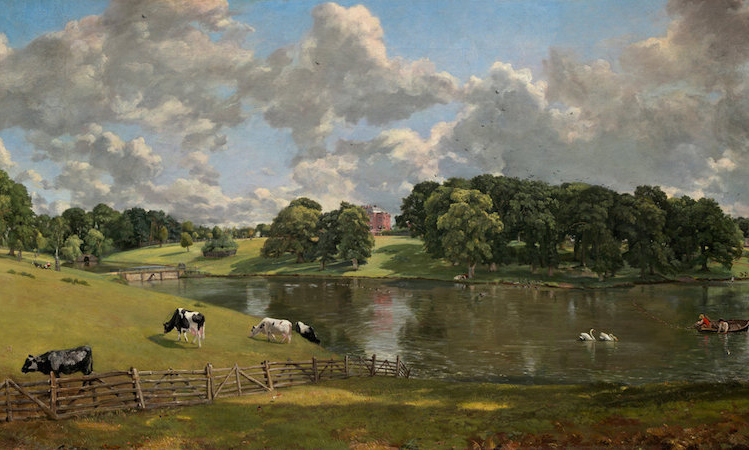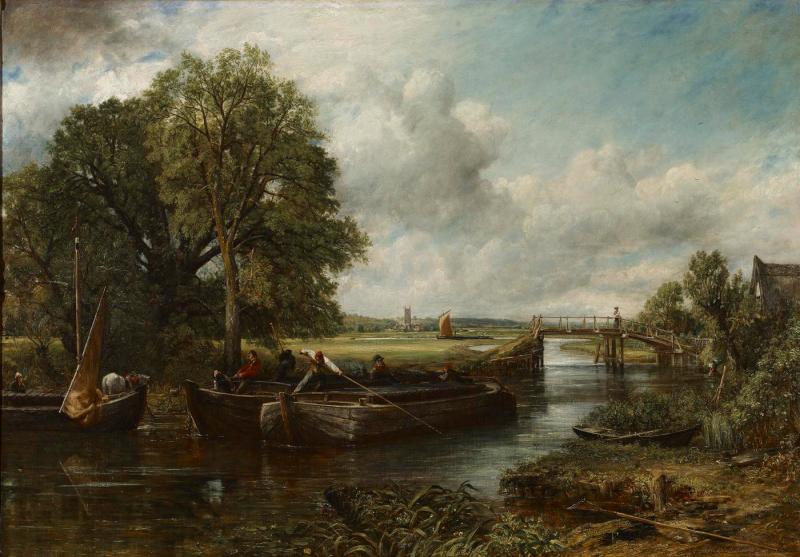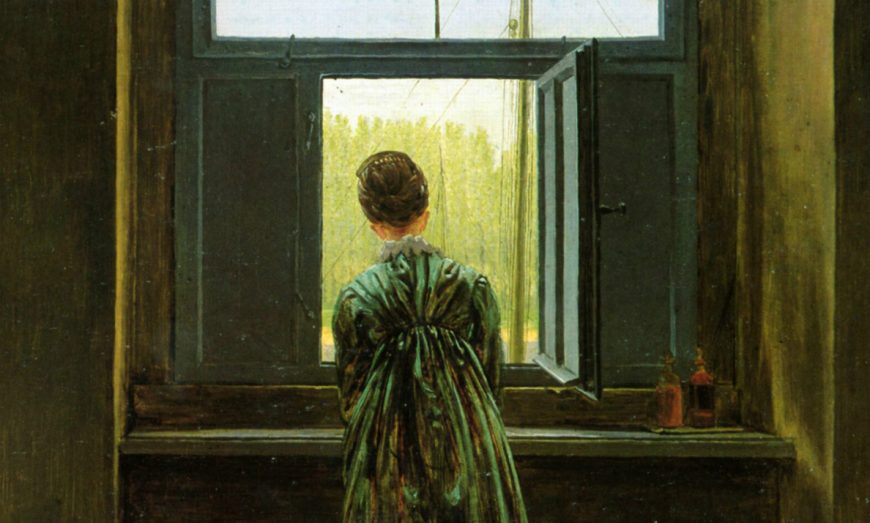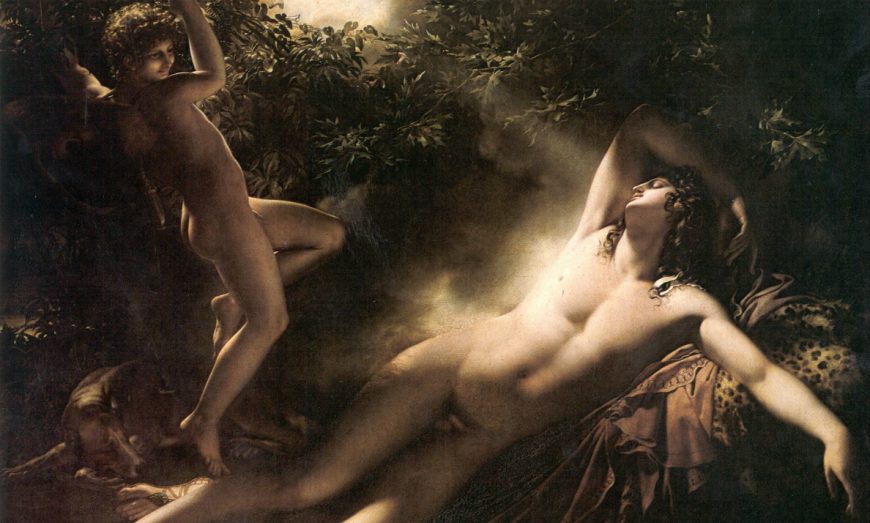Henry Fuseli, Titania and Bottom, c. 1790, oil on canvas, 2172 x 2756 mm (Tate Britain, London)
[0:00] [music]
Dr. Steven Zucker: [0:04] The 18th century, the Age of Enlightenment, was a time when rationalism was all-important, but the light of the rational mind is sometimes not enough.
Dr. Beth Harris: [0:15] We certainly see a reaction against the rationalism and the scientific approach of the Enlightenment in the movement we call Romanticism.
Dr. Zucker: [0:24] In the modern world, we’ve found ways of thinking about the world of the dream, the world of the unconscious, but in the 18th century, this gave rise to an interest in the supernatural.
Dr. Harris: [0:35] Henry Fuseli, a Swiss-born artist who worked largely in England, was known for painting the sublime and the supernatural.
Dr. Zucker: [0:42] He was interested in reconstructing history painting, in developing a kind of history painting that was based on literary themes, and that would allow for fantasy.
Dr. Harris: [0:52] Of course, the works of Shakespeare are perfect for that. Plays like “A Midsummer Night’s Dream,” which features the king and queen of the fairies, Oberon and Titania, are perfect for visualizing the supernatural. That’s what we see here in Fuseli’s painting “Titania and Bottom” from 1790.
Dr. Zucker: [1:11] This is a big painting. It’s the scale of a history painting. It’s the scale of a painting by, say, Jacques-Louis David. But this is a painting that is all fantasy.
Dr. Harris: [1:20] It is, and in it we see Titania, the queen of the fairies.
Dr. Zucker: [1:25] Who looks like she’s having a lot of fun.
Dr. Harris: [1:27] She’s instructing her fairy counterparts to obey all the wishes of one of the characters in the play “A Midsummer Night’s Dream,” Bottom, whose head has been magically transformed into the head of a donkey.
Dr. Zucker: [1:40] Okay, hold on. This is already impossible to follow. Let’s see if I can get this straight. We have the queen of the fairies, who is in love with this character, whose name is Bottom, whose head has been turned into a donkey, who is here instructing all of her fairies to do his bidding.
Dr. Harris: [1:57] Exactly, except that she’s fallen in love with Bottom because of a misplaced magical spell.
Dr. Zucker: [2:03] Of course. [laughs] So, what we’re seeing here is utter fabrication, utter invention, utter theatricality.
Dr. Harris: [2:11] And in fact, it really does look as though we’re looking at a stage, and a performance is being enacted for us. All of the figures face in our direction.
Dr. Zucker: [2:20] The light is theatrical, and the artist is clearly not interested in giving us too much information. He’s allowing for a tremendous amount of the canvas to be dark.
Dr. Harris: [2:29] Titania, the queen of the fairies, is a really beautiful, idealized nude, but she looks very mischievous.
Dr. Zucker: [2:35] Actually, there’s a lot of mischievous looks throughout this painting, but she especially looks mischievous, as does the fairy who’s standing on the right, who, notice, is holding onto a leash with a small old man with a long beard.
Dr. Harris: [2:48] There are lots of vignettes that surround the central two figures of Titania and Bottom.
Dr. Zucker: [2:54] Some of the creepiest passages, I think, are in the foreground, close to us. For instance, on the lower left, we have doll-like figures.
Dr. Harris: [3:02] And the one on the bottom, the top of her head seems to be part of a butterfly.
Dr. Zucker: [3:06] She seems to be shushing something, perhaps us. On the right, you see a hooded figure that’s holding in its hands another small figure that’s looking directly out at us, rather menacingly, but looks like its body has not quite been formed.
Dr. Harris: [3:20] Right, and art historians have identified that figure as a changeling.
Dr. Zucker: [3:24] Here, we see this interest in exploring the shadow, the irrational, a kind of occult, the dream. I find this interesting because I see a continuous thread from this sort of painting into the 19th and 20th centuries. Think for instance of Surrealism, think of the work of Dalí, think of the exploration of the unconscious there.
Dr. Harris: [3:44] The Victorians throughout the 19th century were fascinated by fairies, and there’s a whole genre of Victorian fairy painting.
Dr. Zucker: [3:52] So here’s fantasy that is unnerving, but Shakespeare brings us back. Shakespeare tells us not to worry, not to be too fearful of the fantasy that he’s creating for us.
Dr. Harris: [4:03] At the end of “A Midsummer Night’s Dream,” Puck, one of the primary characters in the play, says to the audience, “If we shadows have offended, think but this and all is mended, that you have but slumbered here while these visions did appear.”
[4:19] [music]



